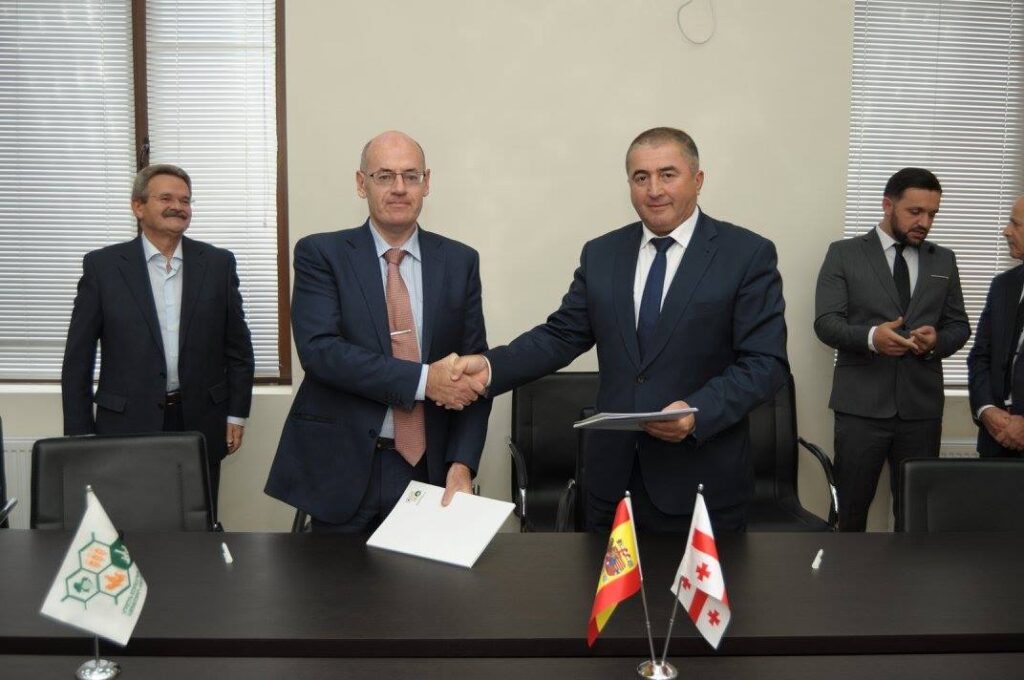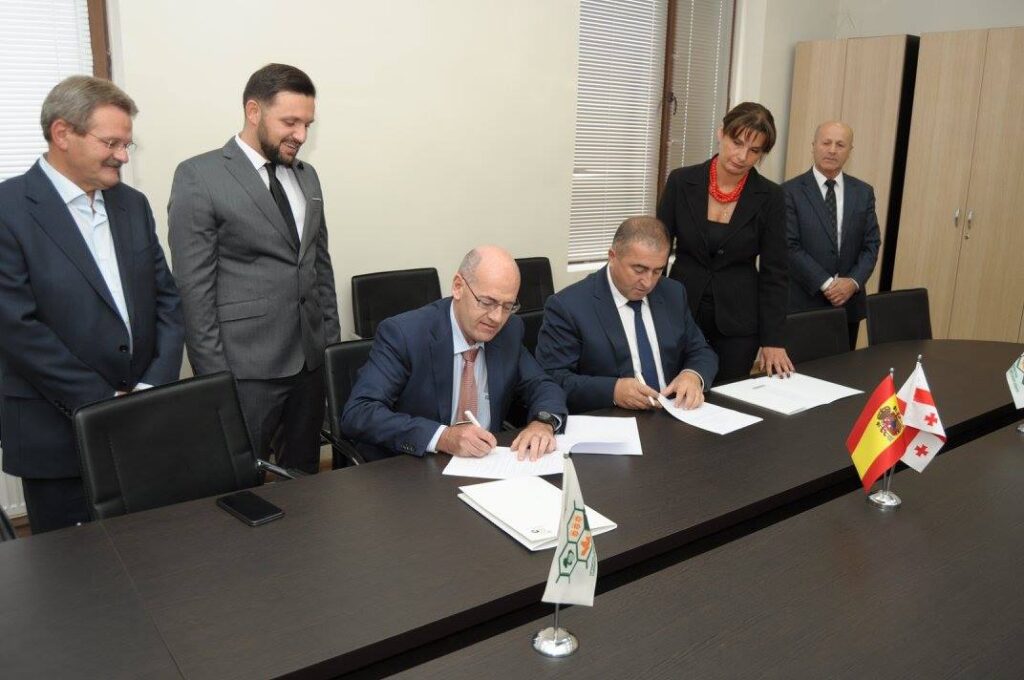Georgia and Spain Join Forces for Agricultural Development: Collaboration Memorandum Signed
- September 28, 2016
- Vasil Babluani
A significant step towards advancing agriculture in Georgia was marked by the signing of a memorandum of collaboration between Georgia’s Agricultural Scientific-Research Center and the Georgian-Spanish company “Native Georgian.”

During the signing ceremony, Yuri Nozadze, Deputy Minister of Agriculture, emphasized the importance of the partnership:
“This memorandum is expected to greatly support the development of livestock farming in Georgia. Under its framework, we will promote the breeding of Kakhetian nomadic pigs, produce high-quality meat products, and market them both locally and globally.”
Levan Ujmajuridze, Director of the Agricultural Scientific-Research Center, added:
“This Georgian-European joint project will create additional jobs and facilitate the transition of meat production to European standards.”
A Global Perspective
“Native Georgian” was recently established by the owner of the world’s largest producer of Spanish ham, renowned for its success in preserving the endangered Spanish black pig breed (Cerdo Ibérico) in the 1920s. The company pioneered the production of Iberian ham, turning it into one of the world’s most sought-after delicacies.
This collaboration stems from negotiations facilitated by Gees Iberia during the official visit of David Saganelidze, Head of Georgia’s Partnership Fund. Representatives of the Spanish company visited various regions of Georgia to study local pig breeds. Research revealed that the Caucasian wild boar breed shares an identical genotype with the Spanish pig breed.


The Joint Project’s Objectives
The Georgian-Spanish partnership aims to establish pig farms in the Racha and Kakheti regions, with an annual production capacity of 9,000 pigs. The project also includes:
- Sharing information and planning joint research initiatives.
- Implementing modern agricultural standards.
- Organizing training sessions to develop highly qualified personnel.
Future Opportunities
Luis Alberto Sanz Casado, Director of “Native Georgian,” highlighted the project’s significance and potential for future collaboration:
“This initiative will promote pig farming in Georgia and establish it as a prominent sector in the agricultural industry.”
As Georgia works to modernize its agricultural sector, collaborations like this one not only enhance local production but also create opportunities to compete on a global scale.